While Czechs bake sweet mazanec bread at Easter, our neighbors in Slovakia prepare their soft and fluffy paska bread. Traditional paska is made from yeast dough, has a sweetish taste, and is topped with braids laid in the shape of a cross, referring to Christian symbolism.
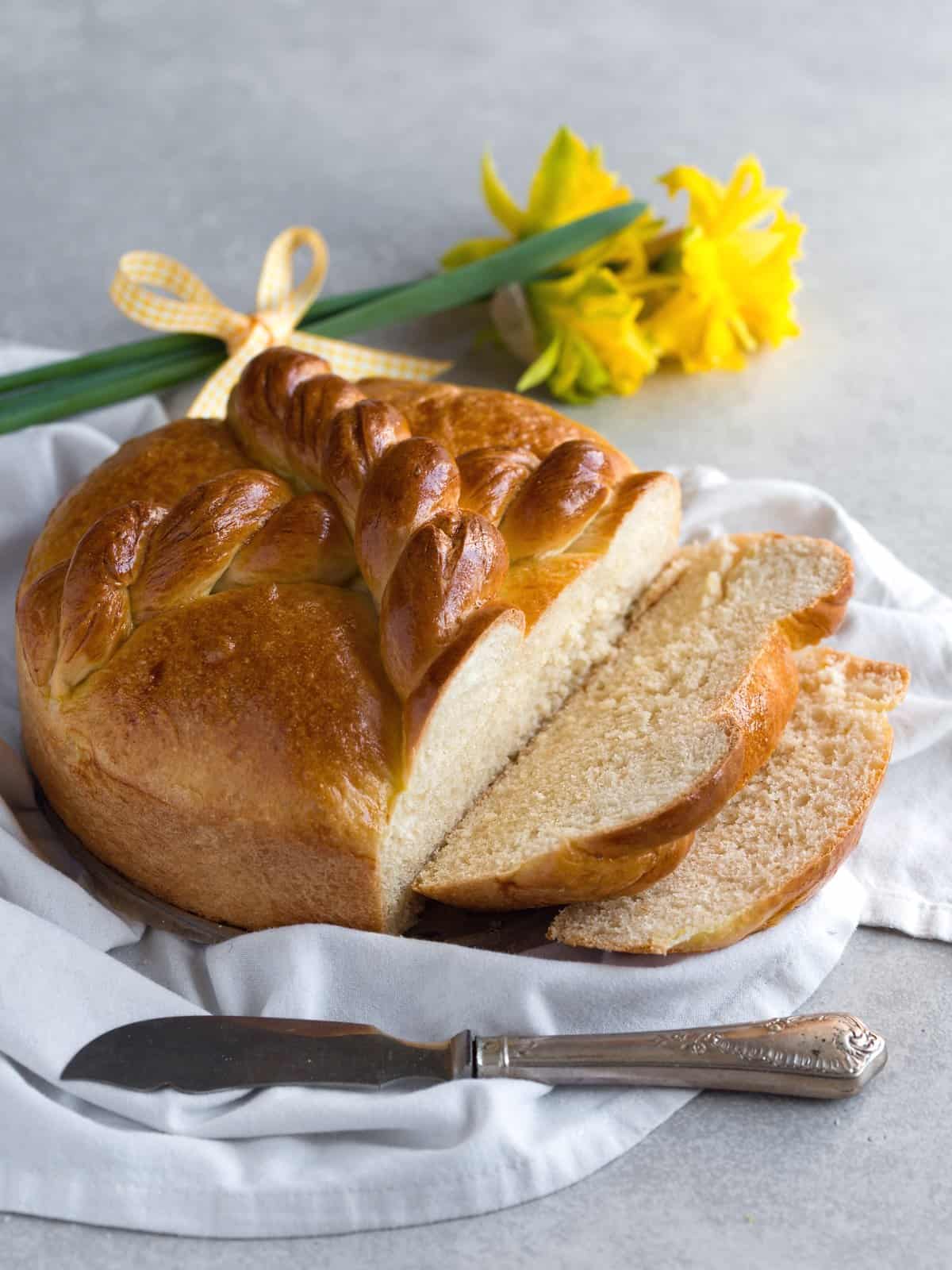
Other names for Slovak paska are pashka, paschka, veľkonočný koláč or biely chlieb.
I would compare the taste and texture of paska to brioche, but the original recipe for paska does not add dried fruits or lemon zest and is also less sweet.
Paska Easter bread can be spread with jam or honey but is more often served with savory dishes on the side. Slovaks love it with ham, eggs, sausages, or Easter cheese, called hrudka.
MY TIP: Try Czech Easter lamb cake (it’s easy to make and so good!)
➜ What is paska bread?
Paska is a ceremonial Easter pastry baked mainly in eastern Slovakia. Popular with the Rusyn community, it is also known in other eastern European countries, such as Ukraine, Poland, Hungary, and Romania.
On Holy Saturday, a nice family tradition in Slovakia was to prepare an Easter basket, into which people put ritual foods, including this delicious bread.
The next day, Slovaks would take the basket to the church for blessing.

➜ The best bowl for baking paska bread
Paska bread most commonly appears in the form of oval or round loaves.
It is baked in a variety of sizes, often using narrower vessels so that the bread is quite tall and the decoration on the surface stands out.
I successfully used my 8-inch (20 cm) springform pan lined with baking paper and the result was perfect. Other options are metal bread pans or smaller oven-safe glass containers, e. g. from Pyrex. Our grandmothers were clever, they even used coffee cans for the bread!
SPECIAL TIP: Use metal dog bowls for baking. They have a conical shape, so you remove the finished bread easily from them. Buy bowls in various sizes for those who want to make breads of different sizes. It's a little odd, but it really works!
➜ Ingredients
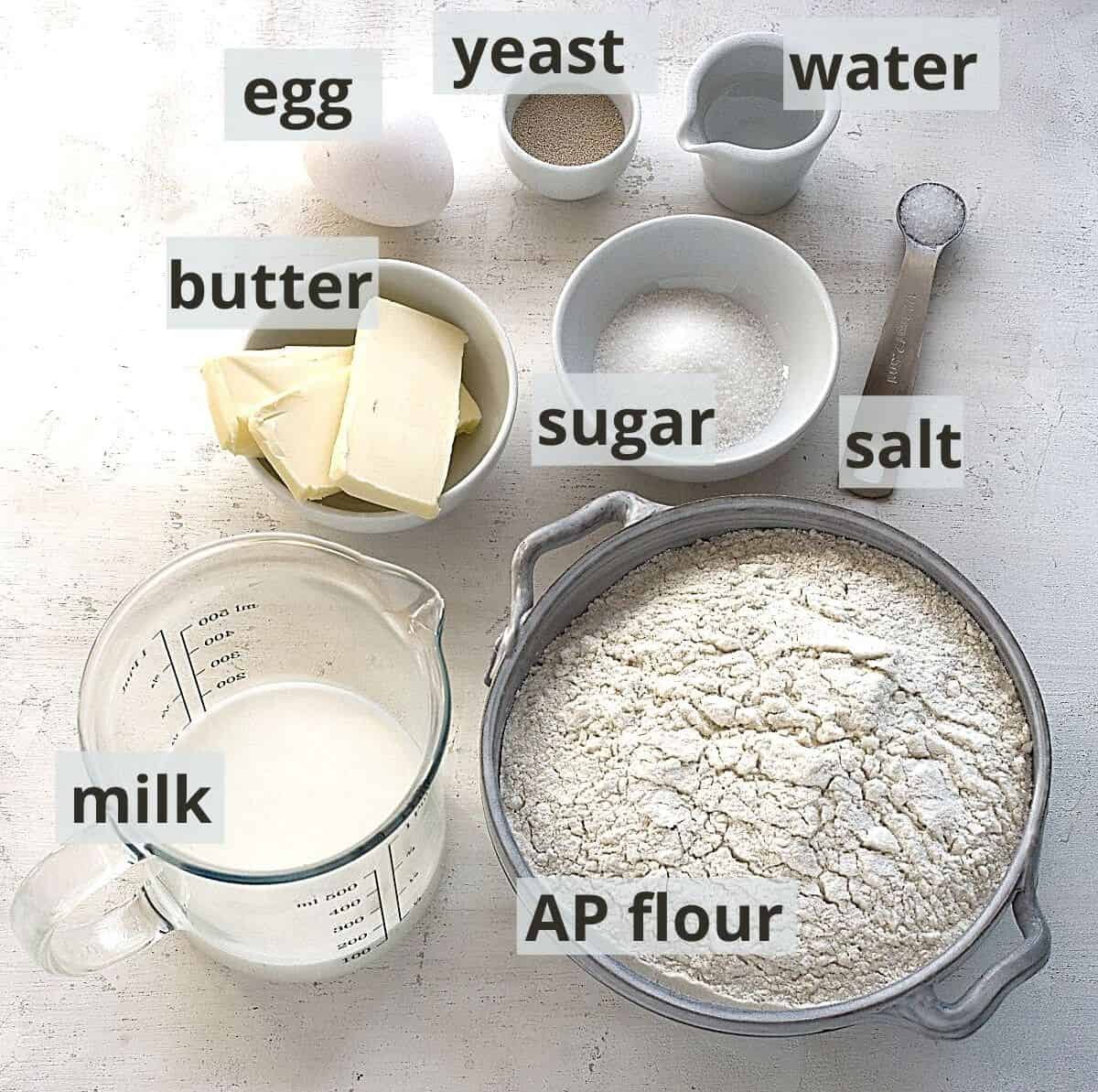
For paska Easter bread recipe, you need:
- All-purpose flour; in the UK plain flour
- Milk; lukewarm
- Eggs; warmed to room temperature. If you forget, put the eggs in warm water for a while.
- Water; lukewarm
- Yeast; instant yeast or fresh yeast. This recipe is made with active dry yeast, mixed with flour. It works great!
- Salt
- Unsalted butter; softened at room temperature. Alternatively, heat it for half a minute in the microwave.
- Coarse sugar
- Egg; for egg wash
✅ You’ll find the exact amount of ingredients below in the recipe card, which you can also print out.
➜ Instructions with Photos
STEP 1: In a large bowl, combine flour, active dry yeast, sugar, and salt (dry ingredients).

STEP 2: Pour in the warm milk (not hot!) and water, crack in the whole egg, and add the softened butter.

STEP 3: Process into a smooth, soft dough. First, mix the ingredients roughly in a bowl with a wooden spoon, then turn the mass onto a floured surface. Sprinkle a small handful of flour on the side. Start working the dough with your hands, and if it sticks, always 'dip' the dough in the prepared flour. Knead until the dough doesn't stick and is beautifully elastic.
Tip: If you have a bread machine or a kitchen stand mixer, use it with the dough hook attachment on.
STEP 4: Return the smooth ball of dough to the bowl and cover with cling film. Put it in a warm spot to first-time rise for an hour. Halfway through the rising time, knead the dough briefly to encourage further leavening. The volume of the yeasted dough should double at the end.

⤍ Learn how to make dough rise in the oven.
STEP 5: Prepare the pan in which you will bake the paska bread. I used a small 8-inches springform pan. I greased the form lightly with butter and lined its bottom and sides with baking paper. Thanks to the butter, the paper sticks to the sides of the pan and holds nicely.
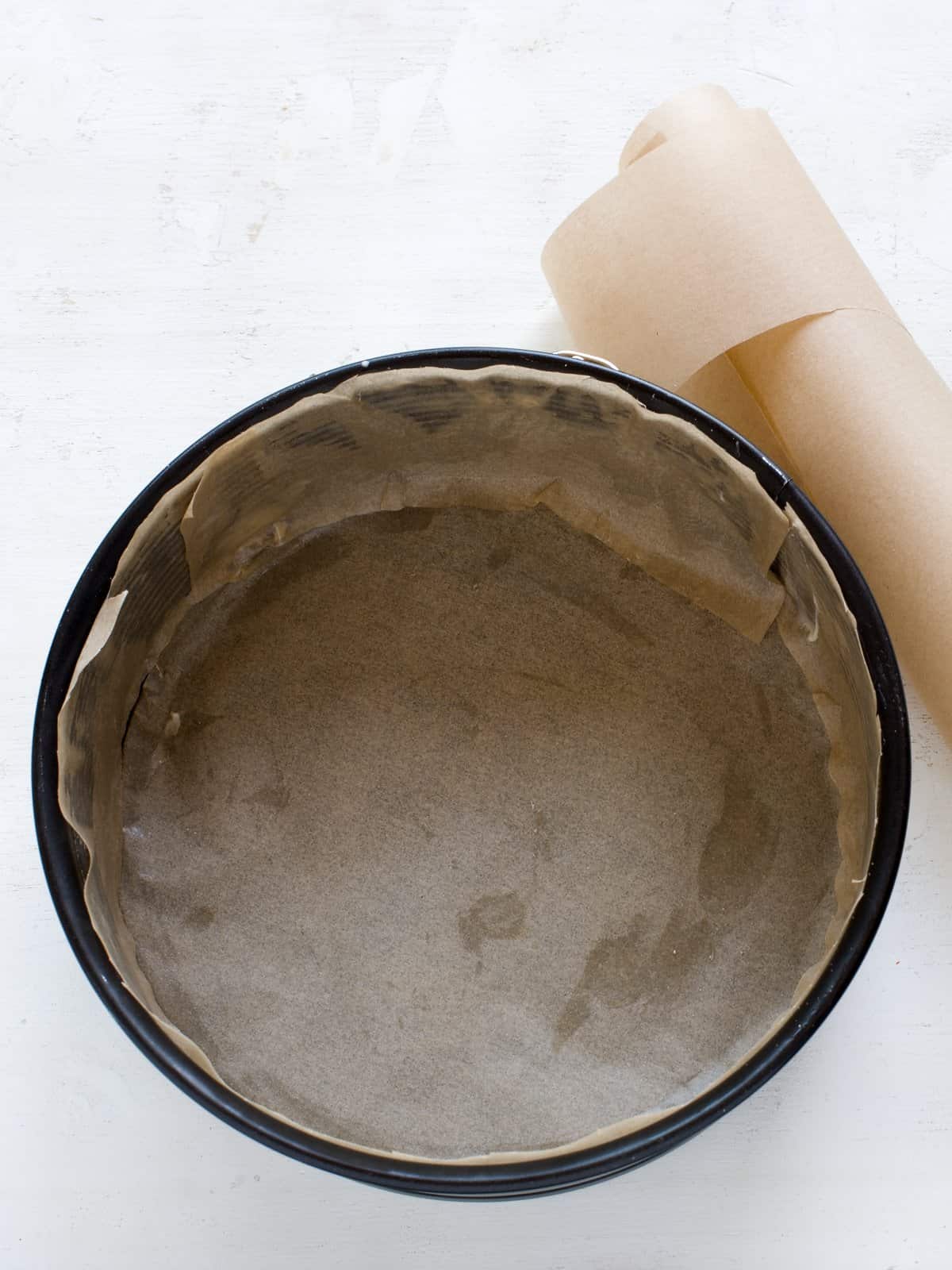
STEP 6: From the risen bread dough, separate a quantity about the size of an egg. Divide this small egg-sized dough into four pieces and roll each into a thin strand. Twist two of each together, making a simple braid.
Shape the remaining dough into a loaf and place it, seam side down, in the lined tin. Place the prepared braids over the dough in the shape of a cross. Tuck their ends between the loaf and pan’s sides a little.
Cover with a clean kitchen towel and put the prepared paska bread to rise for another hour.

STEP 7: Make an egg wash: Whisk an egg with a fork in a medium bowl and brush the whole surface of the bread, braids included, with it.

STEP 8: Preheat the oven to 356°F / 180°C (upper and lower heat). Transfer the paska bread to a wire rack, close the oven door, and bake for about 25-30 minutes, depending on its size.
➜ Serving
Usually, paska bread is served on Easter morning. On the festive table, arrange boiled eggs, smoked meat, slices of ham, sausages (klobasa or kielbasa). Slice the paska and enjoy it along with all these delicacies.
Or have a sweet paska bread: cut a slice and spread it with butter, jam or honey.

➜ Storage
On the first day, the paska bread is soft and fluffy like a feather, and it retains these properties the next day as well.
I recommend covering the remaining bread in plastic wrap not to dry out unnecessarily. At room temperature, it will stay soft for 4-5 days.
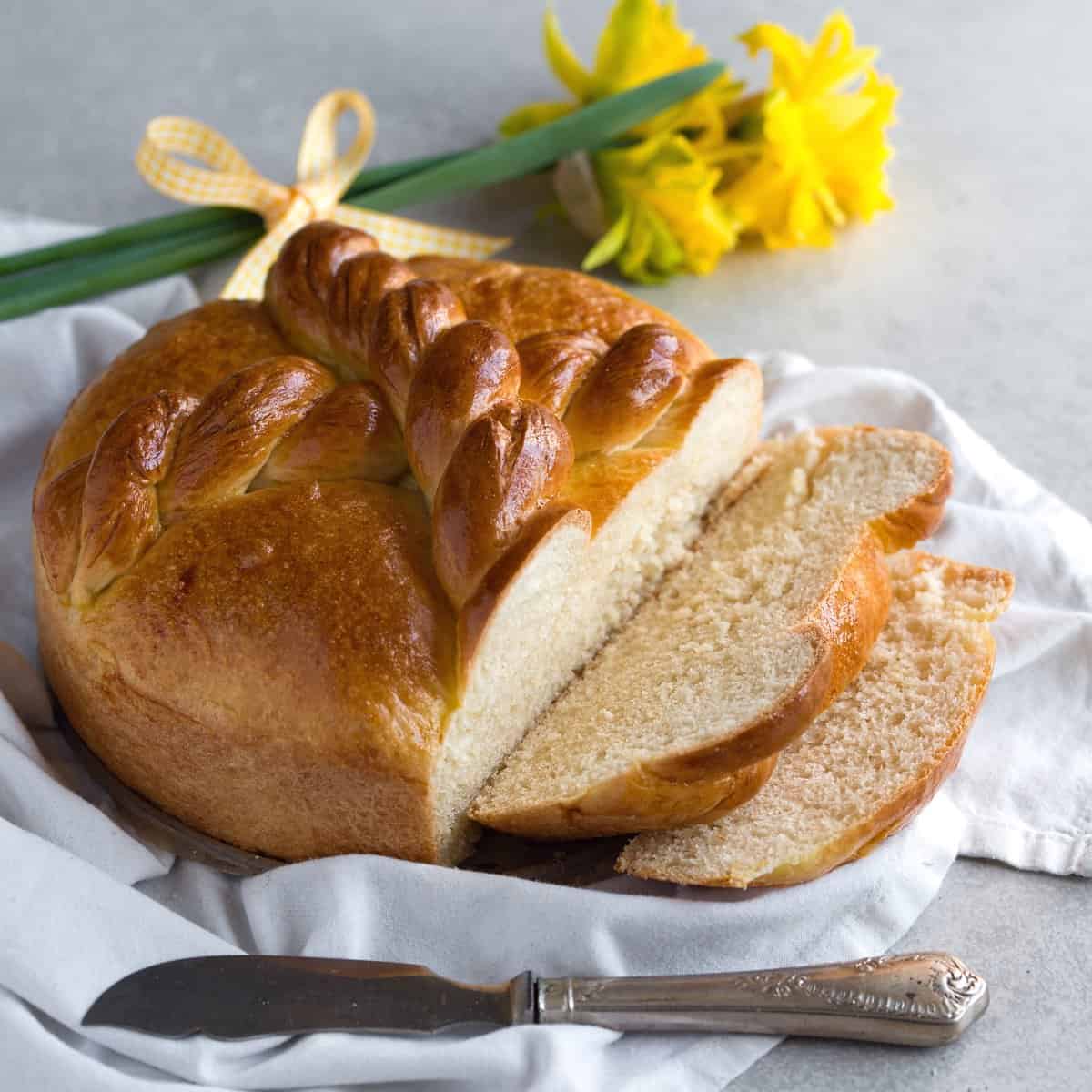
➜ Useful tips
- Slovaks decorate their traditional Easter bread with two crossed braids that serve as one of the religious symbols. In addition to decorating the paska with two crossed strands, try a variety of spirals. The more adorned, the more authentic this Easter meal!
- Instead of lining with baking paper, only grease the loaf pan with butter. If the pan is not too tall and has a conical shape (wider at the top than the bottom), the bread will be easy to remove after baking.
- Leave the dough necessary to rise at least twice for one hour, then the bread does not crack during baking and keeps its shape nicely.
More Easter recipes:
- Bozi milosti – Czech fried sweet pastry with white wine
- Easy egg salad
- Czech Easter stuffing – velikonoční nádivka
- Sweet Easter birds – made with yeast dough
Or browse Czech Easter food category for further ideas.
Tried this recipe?
Leave a review down in the comments! ⭐⭐⭐⭐⭐
Follow me on Facebook and Pinterest. Subscribe to my newsletter. Send me any question about Czech cuisine to my e-mail. I love hearing your feedback!
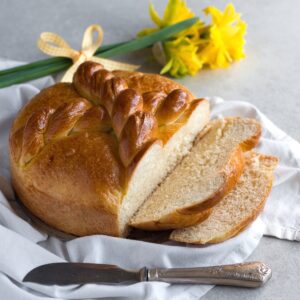
Paska Slovak Easter Bread
Ingredients
- 2 and ½ cups all purpose flour
- ½ cup milk warm but not hot
- 1 egg
- 1 Tablespoon water warm
- 1 and ½ teaspoons active dry yeast
- ½ teaspoon salt
- ½ stick unsalted butter (55 g) softened at room temperature
- 2 Tablespoons granulated sugar
For egg wash
- ½ egg
Instructions
- Combine flour, active dry yeast, sugar, and salt (dry ingredients) in a large bowl.
- Pour in the warm milk (not hot!) and water, crack in the whole egg, and add the softened butter.
- Process into a smooth, soft dough. First, mix the ingredients roughly in a bowl with a wooden spoon, then turn the mass onto a floured surface. Sprinkle a small handful of flour on the side. Start working the dough with your hands, and if it sticks, always 'dip' the dough in the prepared flour. Knead until the dough doesn't stick and is beautifully elastic.
- Return the smooth ball of dough to the bowl and cover with cling film. Put it in a warm spot to first-time rise for an hour. The volume of the yeasted dough should double. Halfway through the rising time, knead the dough briefly to support further leavening.
- Prepare the pan in which you will bake the paska bread. I used a small 8-inches springform pan. I greased the form lightly with butter and lined its bottom and sides with baking paper. Thanks to the butter, the paper sticks to the sides of the pan and holds nicely.
- From the risen bread dough, separate a quantity about the size of an egg. Divide this small egg-sized dough into four pieces and roll each into a thin strand. Twist two of each together, making a simple braid.
- Shape the remaining dough into a loaf and place it, seam side down, in the lined tin. Place the prepared braids over the dough in the shape of a cross. Tuck their ends between the loaf and pan’s sides a little.
- Cover with a clean kitchen towel and put the prepared paska bread to rise for another hour.
- Make an egg wash: Whisk an egg with a fork in a medium bowl and brush the whole surface of the bread, braids included, with it.
- Preheat the oven to 356°F / 180°C (upper and lower heat). Transfer the paska bread to a wire rack, close the oven door, and bake for about 25-30 minutes, depending on its size.
Notes
- Makes 1 8-inches paska bread.
- SERVING: Usually, paska bread is served on Easter morning. On the table arrange boiled eggs, smoked meat, slices of ham, sausages (klobasa or kielbasa). Slice the paska and enjoy it along with all these delicacies.
- Special tip: Use metal dog bowls for baking. They have a conical shape and the bread can be easily removed from them. You can even buy bowls in various sizes for those who want to make breads of different sizes. It's a little odd, but it really works!
- Instead of lining with baking paper, only grease the loaf pan with butter. If the pan is not too tall and has a conical shape (wider at the top than the bottom), the bread will be easy to remove after baking.
DISCLAIMER: Because I come from Central Europe, my recipes are based on metric units such as grams or milliliters. Check out how I convert metric units to the U.S. system:
Conversion chart

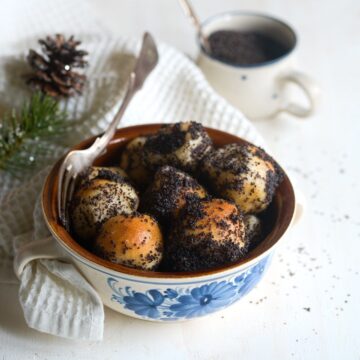
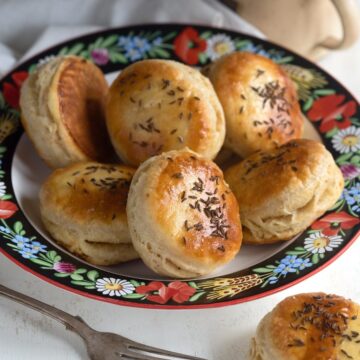
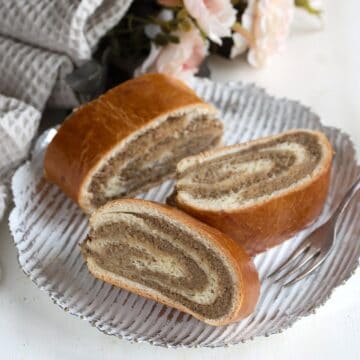
Chuck
My mother made a cheese paska. It had a ball of cheese dough in the middle and the white dough around it. I know that she specifically used Colby longhorn cheese for the center dough. I have sometimes had an issue with the cheese dough not rising as fast as the regular dough and leaving a gap in the center. Any ideas?
Anicka Cooklikeczechs.com
Chuck, thank you for your comment. For yeast dough, all ingredients should always be at room temperature. The only exception is when making yeast starter, where lukewarm milk is used. The problem you describe may have occurred because you used cold cheese straight from the fridge and the dough sat down and didn't rise. Fingers crossed that your next attempt is successful!